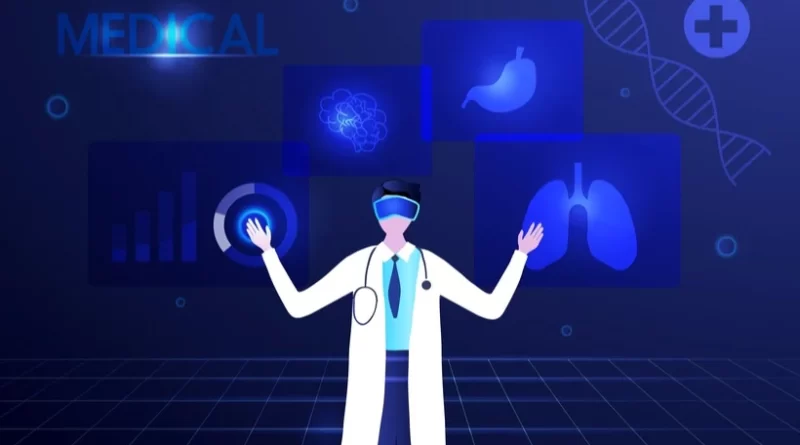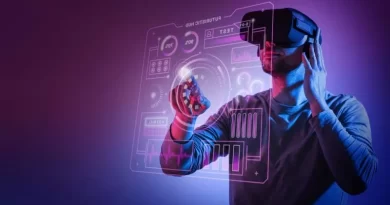The Amazing Possibilities of Healthcare in the Metaverse
The metaverse is the result of the convergence of three major technological trends, each of which has the potential to impact healthcare in its own way. Together, however, they have the potential to create entirely new channels for delivering care, potentially lowering costs and vastly improving patient outcomes.
The metaverse is currently a hot topic, with much written and said about its potential to revolutionize gaming, entertainment, socializing, work, and commerce. However, little has been said about how it might affect healthcare metaverse, despite the fact that this is another field where its impact could be transformative.
To begin, for those who are still perplexed, what is the metaverse? The reason for the confusion is that no one is quite sure at the moment, as it’s somewhat up in the air.
What everyone agrees on is that it’s the next version of the internet, one that will use artificial intelligence (AI), augmented reality (AR), virtual reality (VR), and ever-increasing connectivity (for example, 5G networks) to create online environments that are more immersive, experiential, and interactive than what we have now.
The metaverse is the result of the convergence of three major technological trends, each of which has the potential to impact healthcare in its own way. Together, however, they have the potential to create entirely new channels for delivering care, potentially lowering costs and vastly improving patient outcomes. These are telepresence (the ability to be together virtually even when we are physically separated), digital twinning, and blockchain (and its ability to let us create a distributed internet).
Let’s take a look at them one by one:
Telepresence
Telemedicine is the provision of medicine as a remote service in the healthcare industry. During the Covid-19 pandemic, this became increasingly popular. Prior to 2020, only 43% of healthcare facilities could provide remote treatment to patients. Today, that figure is 95%. For routine consultations that do not require a physical examination (or can be performed visually), doctors and nurses have discovered that they can diagnose many of the minor conditions that make up the vast majority of their caseload via phone or video call more quickly and efficiently.
This will almost certainly continue in the metaverse. However, virtual reality – a key technology that enables the next-level immersion that qualifies a platform or application as part of the metaverse – opens up an entirely new set of possibilities. Anyone who has tried it knows that headset-based virtual reality experiences provide a far greater sense of “being there” than other virtual environments such as websites, messaging apps, or social media.
Telemedicine consultations, particularly through virtual reality, mean that patients are no longer restricted to being treated by specific clinicians based on their physical location. If you’re in Europe and the best specialist for your specific condition is in India, you can virtually be in the same room by wearing headsets.
Scans and tests can be performed at a facility close to you, and the data can be transferred to the specialist anywhere in the world. It’s especially useful in places like China, where medical professionals are in short supply, as well as for patients in remote areas who would otherwise have to travel long distances to see a doctor.
Therapy is another area where it can be especially beneficial. Environments can be tailored to individual patients – VR is already being used in aversion therapy by psychologists and psychiatrists, allowing patients to interact with situations that cause them anxiety in safe environments where every aspect of the interaction can be closely monitored and controlled.
Virtual Twins
A digital twin is a virtual model, or simulation, of any object, process, or system that is created using real-world data in order to learn more about its real-world counterpart. In the metaverse, the digital twin could be the patient themselves.
According to Jack Latus, CEO of Latus Health, an online healthcare provider specializing in occupational health, digital twins will eventually become “test dummies” for individuals, able to predict everything from how we will recover from surgery to how we will react to specific medications. This will happen as our ability to map and understand individual genetics improves.
He recently told me during a conversation, “We’ll be able to fast-forward, so how does it affect the twin if we age this twin by ten years as a result of these interventions?”You begin to almost see into the future. If we follow this protocol for the next ten years, we will see that this is the outcome.”
Blockchain Innovation
Blockchains, best known as the technology that underpins cryptocurrencies such as Bitcoin, are simply distributed and encrypted databases that allow data to be stored and transferred securely in a way that no one other than the data owner can tamper with. Many people regard them as an important component of the metaverse concept because they enable decentralized communities to be governed democratically through smart contracts, as well as a record of digital “ownership” of environments or even objects in the digital domain.
Their most obvious application in healthcare is in the management and security of our highly valuable health data. At the moment, data is frequently shared between multiple organizations in ways that are both inefficient and opaque to the data’s owners (us).
Because health records are typically stored on centralized servers, our data is vulnerable to theft (the resale value of a single health record is said to be between $70 and $100 on the dark web). It also means that accessing it, even for those with a legitimate need for it, such as a specialist who is treating us, is frequently a lengthy and laborious process.
“It’s clunky,” Latus says. You write to your doctor and ask for access to your records; you sign a form; you may receive the records in 28 days; and you must send them on. That is absurd, given the technology available today. It would be far more logical for everyone to have their own records on a blockchain in the form of a personal file. It can’t be hacked and you can give consent to any clinician anywhere in the world to review your records with the click of a button.”
Convergence
The convergence of these core technologies in online environments – the metaverse – means that healthcare professionals will be able to deliver more integrated treatment programs and packages, free of the silos that plague much of the current healthcare system. Rapid information sharing among clinicians would allow underlying causes of illness to be identified more quickly. Monitoring patient activity in the metaverse allows factors such as compliance to be tracked more easily, which aids in the diagnosis and treatment of illness. Latus uses the example of a patient receiving physiotherapy for a knee injury.
“It appears to be a purely physical issue, but if it isn’t improving, you have to look at the mental effects – why isn’t it improving?” It is possible that the patient is not completing their rehabilitative exercises due to depression, and thus the physical injury will not heal. Offering treatment in a collaborative manner within virtual environments, along with a new approach to data sharing, should make this type of treatment faster and more effective.
Virtual Clinics
Another aspect of Latus’ vision for the future of healthcare revolves around the concept of the “virtual hospital.” Latus Healthcare is currently working on this project, which could be available as a service within the next 12 to 18 months. It consists essentially of a virtual reality hospital environment accessed via a headset, where treatments will initially be focused on counseling and physiotherapy services. Computer vision will be used in physiotherapy, for example, to investigate the range of motion in damaged joints, as well as the progress that patients are making toward recovery.
“With VR and AR, we’re able to give them much better feedback on their process,” says Latus. For example, if someone has a shoulder joint problem, and their shoulder range of motion improves by 3%, you probably won’t notice.
“But if you can get it reported back to you, you’ll actually see it working and get a plan… if you improve at this rate, you’ll be back to normal in a matter of weeks.” From the standpoint of motivation or compliance… that will have a massive impact. You have legitimate data to back up the work you’ve been doing.”
Many aspects of healthcare delivery will undoubtedly be influenced by the opportunities provided by the metaverse. There may be some obstacles to overcome first, particularly with regard to people’s attitudes toward receiving treatment online or remotely, which many may still regard as a second-best or backup option. There are also concerns about equality of access – VR headsets are not cheap, and requiring them to participate could be seen as contributing to inequality in healthcare access. However, these are issues that are likely to be addressed over time if the new generation of digital-first healthcare providers can successfully demonstrate that their innovation will result in lower costs and better patient outcomes.




